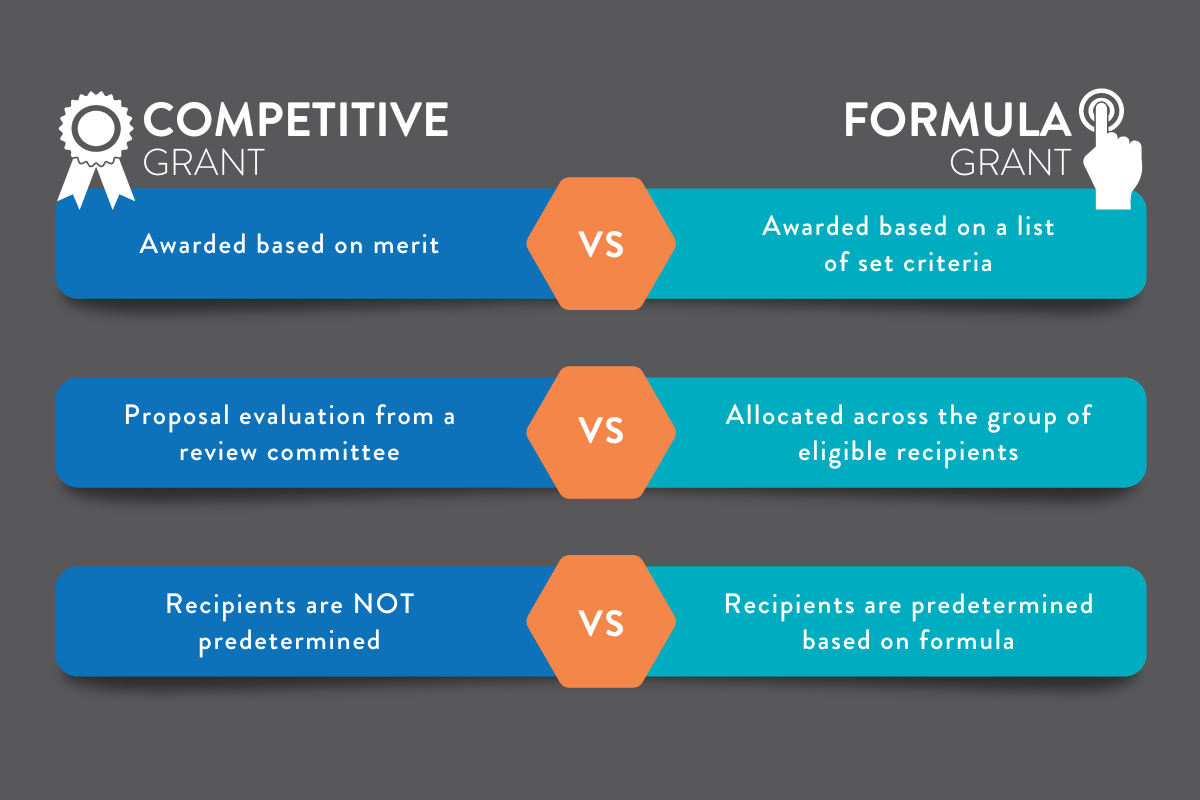K-12 Special Education Funding
The Ultimate Guide to Leveraging Federal, State, and Local Funding Sources
Contents
Introduction
Funding new teaching tools in special education classrooms is a challenge. Educators and administrators looking to innovate in their classrooms are often overwhelmed before they even begin. Weeding through the federal, state, and local resources, researching, and understanding all the options available is one of the biggest roadblocks to implementing new tools.
Good news. If you’re in the weeds exploring funding options for your autistic students, we did the heavy lifting. Below you will find a variety of funding options you can use to implement dynamic SPED programs in your school and bring our evidence-based curriculum to your classroom.
We’re here to guide you through this process. We’ve done it before with more than 120 partners just like you.
+
Partners Supported
$ M+
Grant Dollars Deployed
+
Years of K-12 Experience
Funding New Programs for Special Education Students
Learning what types of funding are available to your district can be an overwhelming task, but the knowledge gained will drive a significant impact. Sadly, billions of dollars are left on the table every year - money that could have otherwise been spent on improving outcomes for special needs students.
In this guide, we summarize key avenues of funding for K-12 special education programs. We hope it can be a helpful tool to amplify the impact you make for your students, whether or not you purchase a RoboKind Social Skills or Phonics program. Each section of this guide can be used separately to help meet your exact needs. Alternatively, this guide can be downloaded as a PDF and used as a comprehensive resource.
As you scroll down the page, you will discover a variety of topics, ranging from RoboKind’s history to sample grant applications with IEP and SMART Goal examples.
Funding Made Easy Cheat Sheet
K-12 Special Education funding is a big, messy process. Here is a simple cheat sheet with key federal grants.
“Working with RoboKind has been an amazing experience. They were able to provide the exact verbiage to include in the portions of the TEA Innovative Practices for Students with Autism grant application in the exact grant format. They have been nothing short of extremely supportive and helpful through the entire process!”
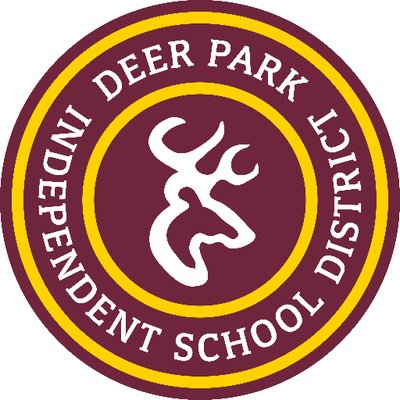
Misti Mead | Deer Park Independent School District | TX
We've supported districts through every stage of the funding process...
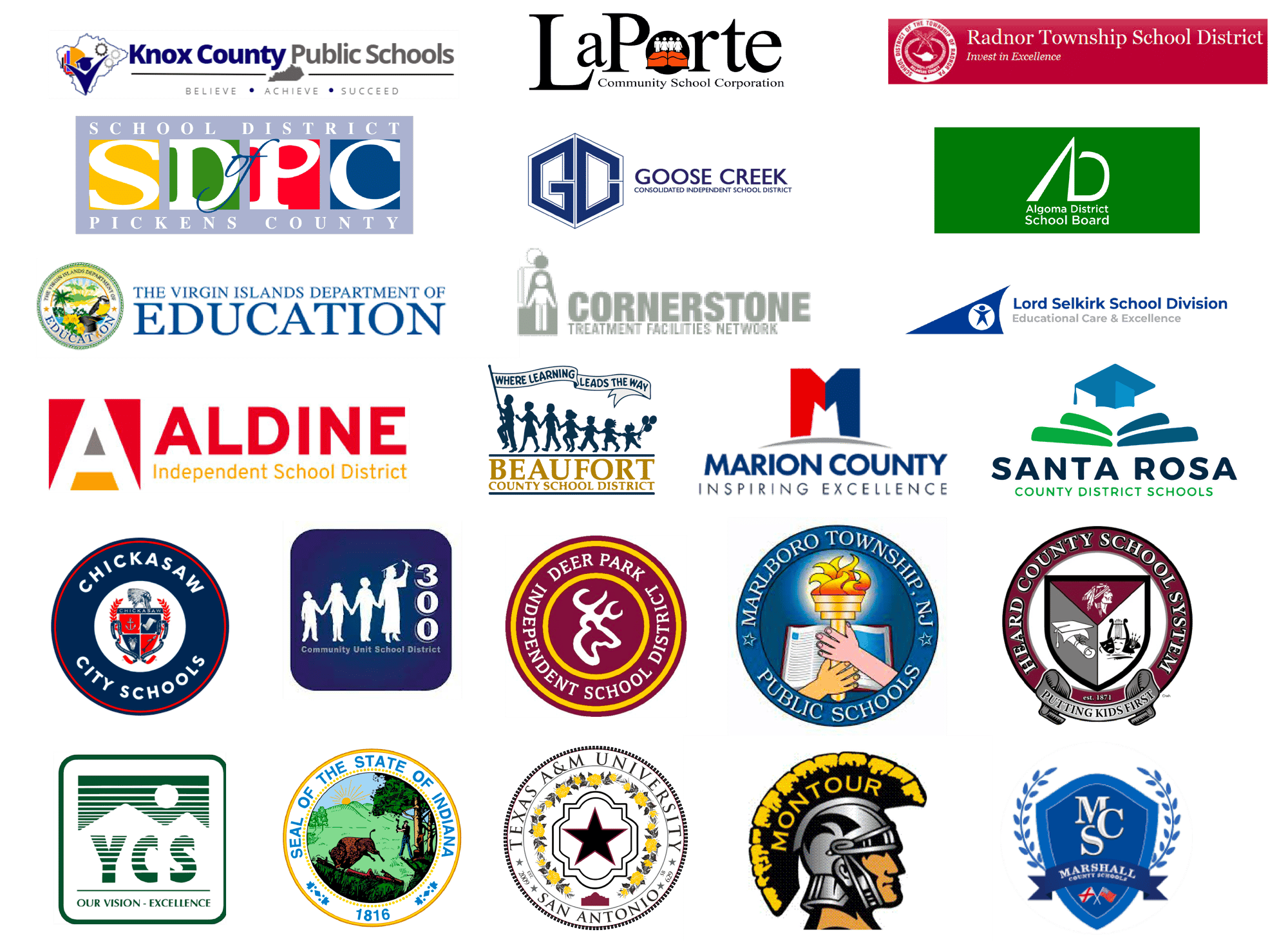
Funding is hard. Let us help.
Do you want RoboKind for your students? We get creative with funding sources. We've done it before.
RoboKind History
Founded in 2011 by Richard Margolin, RoboKind is a mission-driven company focused on improving outcomes for autistic students or other similar social, emotional, or behavioral disabilities across core foundational skills like behavior regulation, emotional understanding, communication, and phonics.
Our curriculum was developed in partnership with experts in the field of Autism Spectrum Disorder (ASD) and based on a multidisciplinary developmental-behavioral approach leveraging speech-language pathology, occupational therapy, and applied behavioral analysis (ABA) principles.
Our social skills curriculum is a manualized practice that maintains a high level of fidelity. With our facially-expressive robots and avatars, the program deploys 22 evidence-based practices, a key reason why we are endorsed by the Council of Administrators of Special Education (CASE).
Our play-based, explicit, and systematic phonics program aligned with the Science of Reading launched in Fall 2023, and has already been endorsed by CASE. Early studies demonstrate drastic increases in students' self-reported engagement and reading levels.
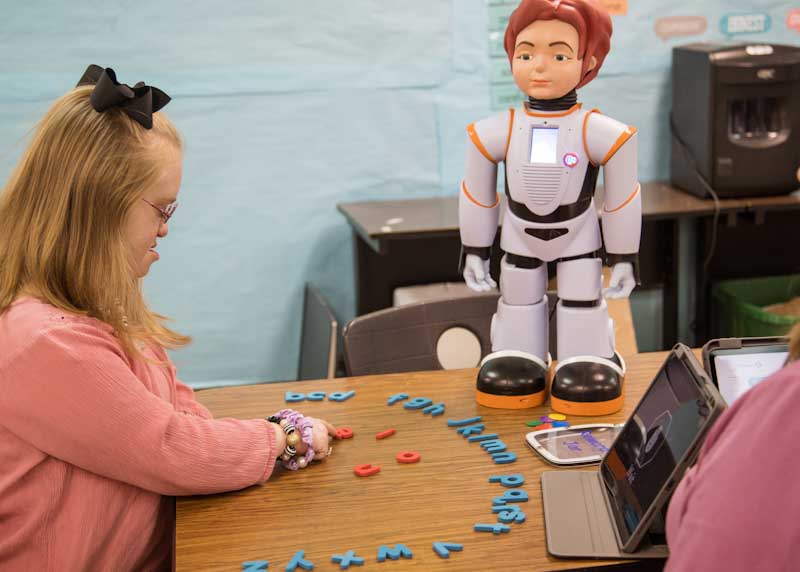
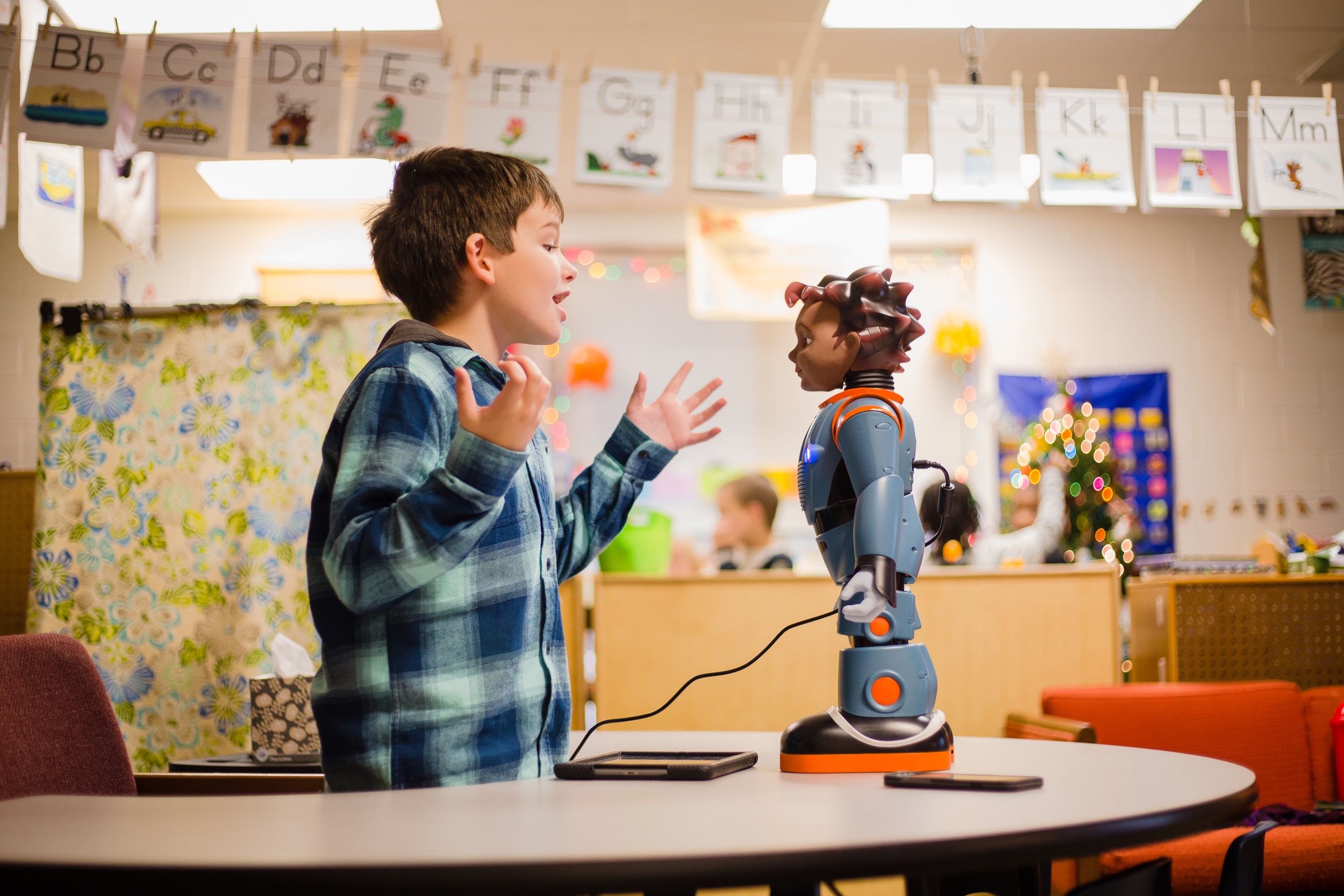
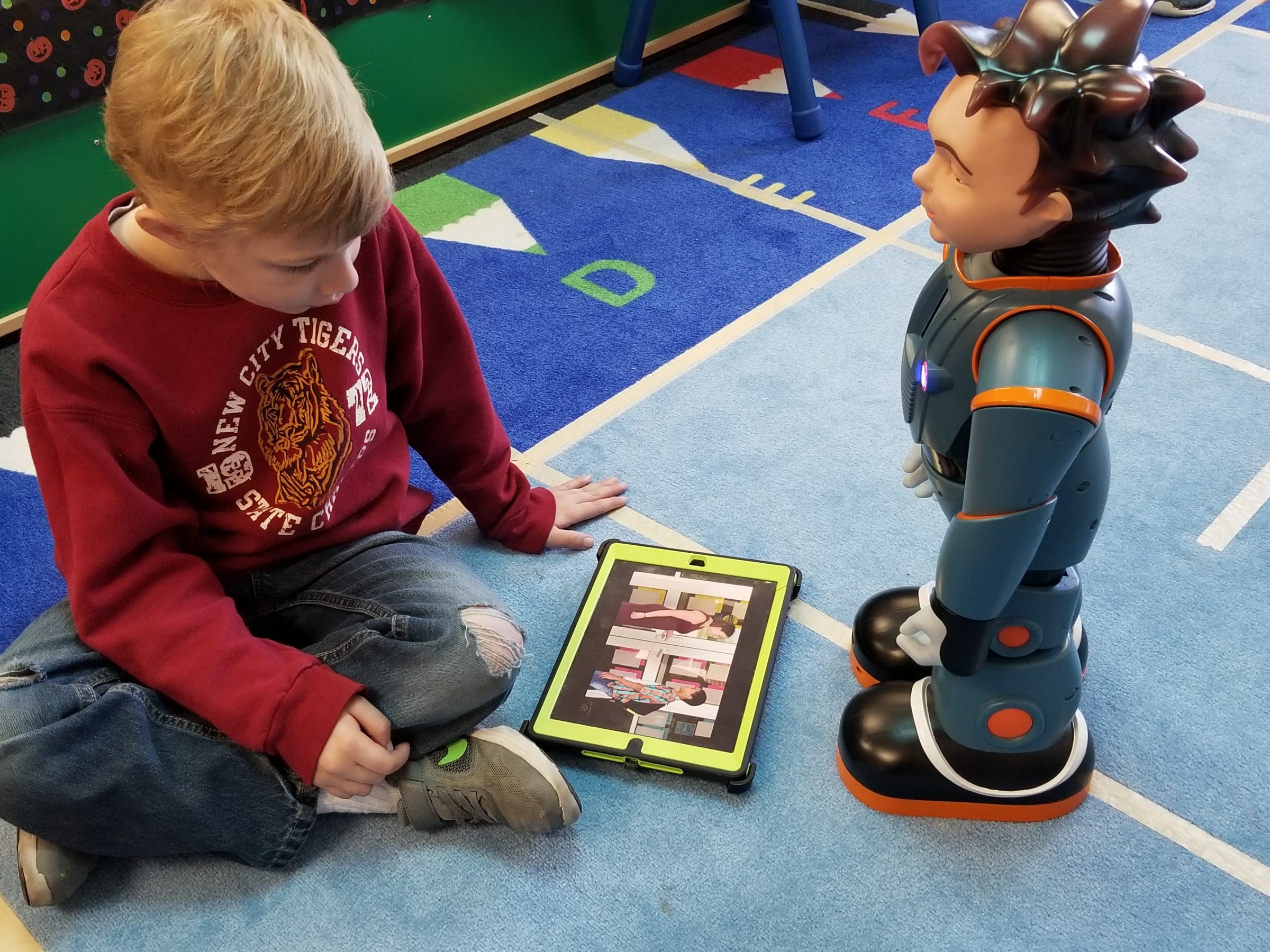



2011
RoboKind is founded, focusing on creating facially-expressive robots for the classroom
2015
RoboKind's Social Skills curriculum is launched after several years of testing and development, RoboKind continues to emphasize serving students on the spectrum
2016
The University of Texas at Dallas Callier Center for Communication Disorders research proves children on the autism spectrum engaged with Milo 87.5% of the time vs just 2-3% of the time with a human therapist alone
2020
RoboKind achieves CASE endorsement, the first and only Social Skills program endorsed by the Council of Administrators of Special Education
2022
RoboKind students and educators surpass 1M minutes in lesson usage. That is impact we are proud to celebrate!
2023
RoboKind launches Phonics with research-demonstrated improvements in reading levels and student enjoyment in reading.
CASE endorses the RoboKind Phonics program.
RoboKind Program Overview
Achieve mastery across core skills and celebrate impact in your special education classroom.
To create RoboKind's curriculum, we pulled together a wide variety of autism experts to develop a comprehensive experience consisting 200+ robot and avatar-delivered lessons, 260+ skill generalization lessons and activities, and hundreds of model behavior videos and vocabulary symbols to support and reinforce important concepts and core vocabulary. The facially-expressive humanoid avatars and robots speak 20% slower than the average rate allowing students with auditory processing needs time to react. When combined with multi-screen visual support, each lesson experience allows children with processing deficits to engage more easily in each lesson.
Benefits of facially-expressive robot technology
RoboKind’s model R25 and corresponding avatar have a full range of humanistic facial expressions, speech, and movement. The RoboKind program was designed specifically to work with children across the autism spectrum and students diagnosed with similar intellectual disabilities.
Each lesson is repeated with perfect consistency and as often as is necessary for students to learn new concepts, and generalize social and phonics skills to real-life situations.
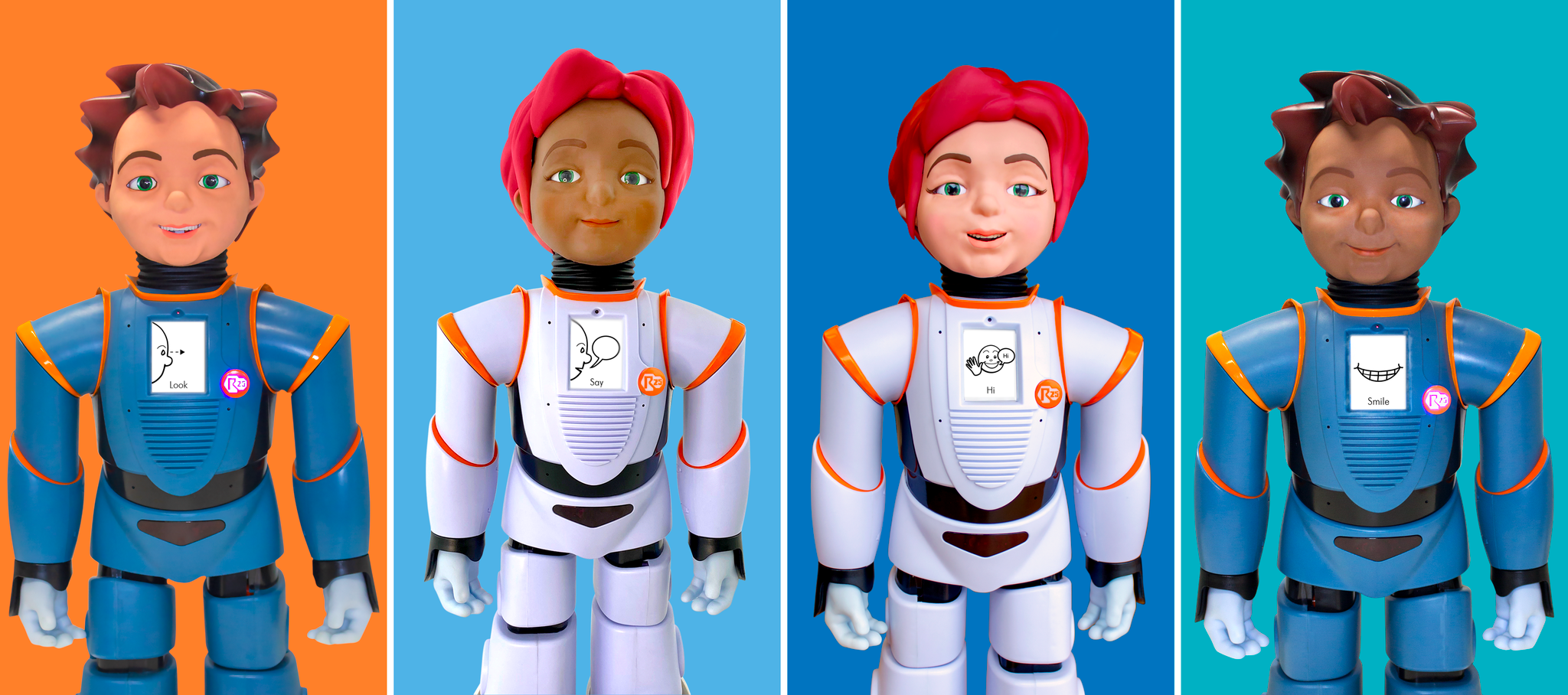
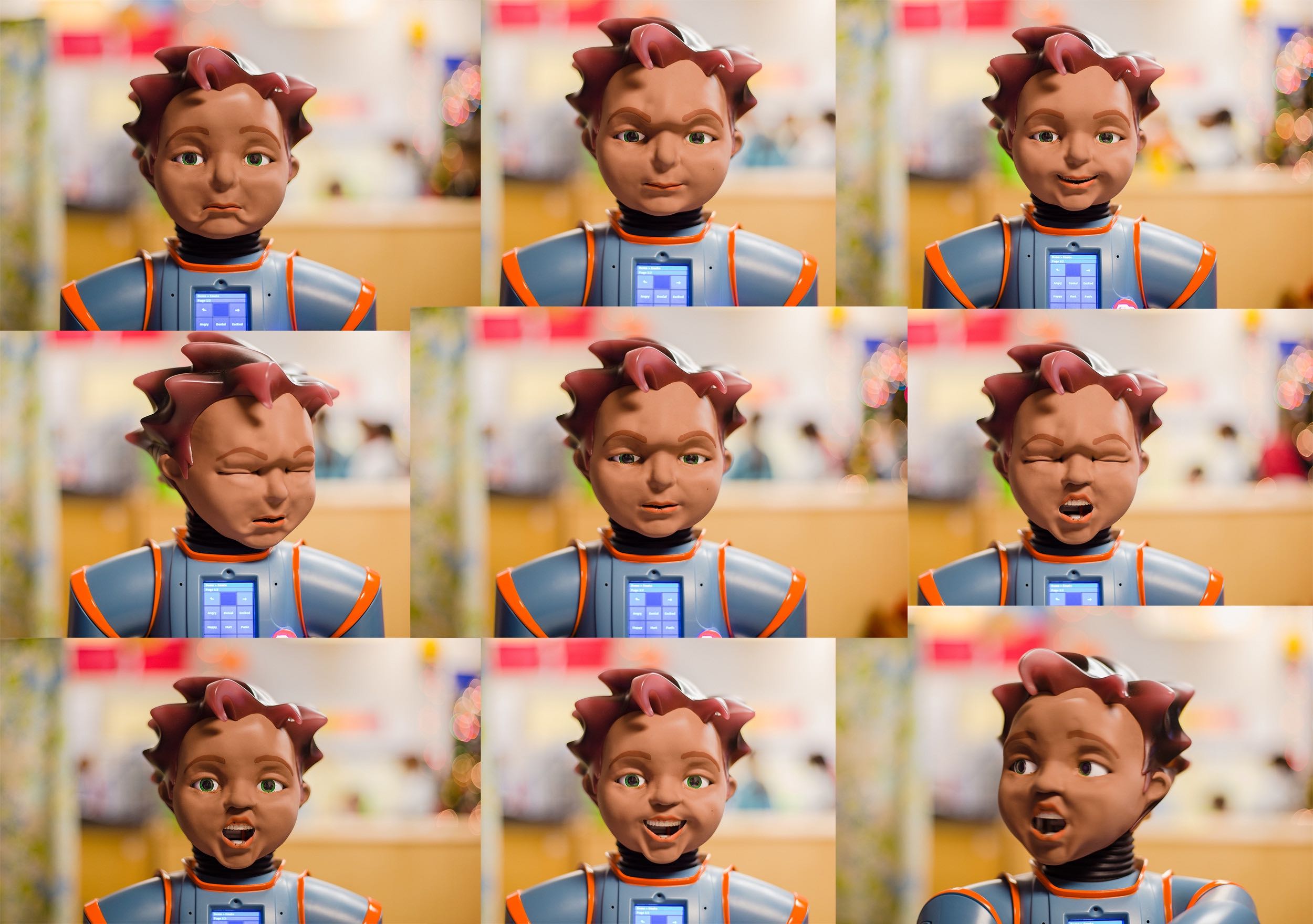
Evidence-based Social Skills Curriculum
At all stages, RoboKind has prioritized building a program based on a multidisciplinary developmental-behavioral approach leveraging speech-language pathology, occupational therapy, and applied behavioral analysis (ABA) principles.
The RoboKind curriculum includes 22 out of 28 evidence-based practices for teaching autistic students.
Social Skills Scope & Sequence
Here's a listing of all modules and lessons included in the RoboKind in the Social Skills..
Phonics Scope & Sequence
Here's a listing of all units and lessons included in the RoboKind Phonics programs.
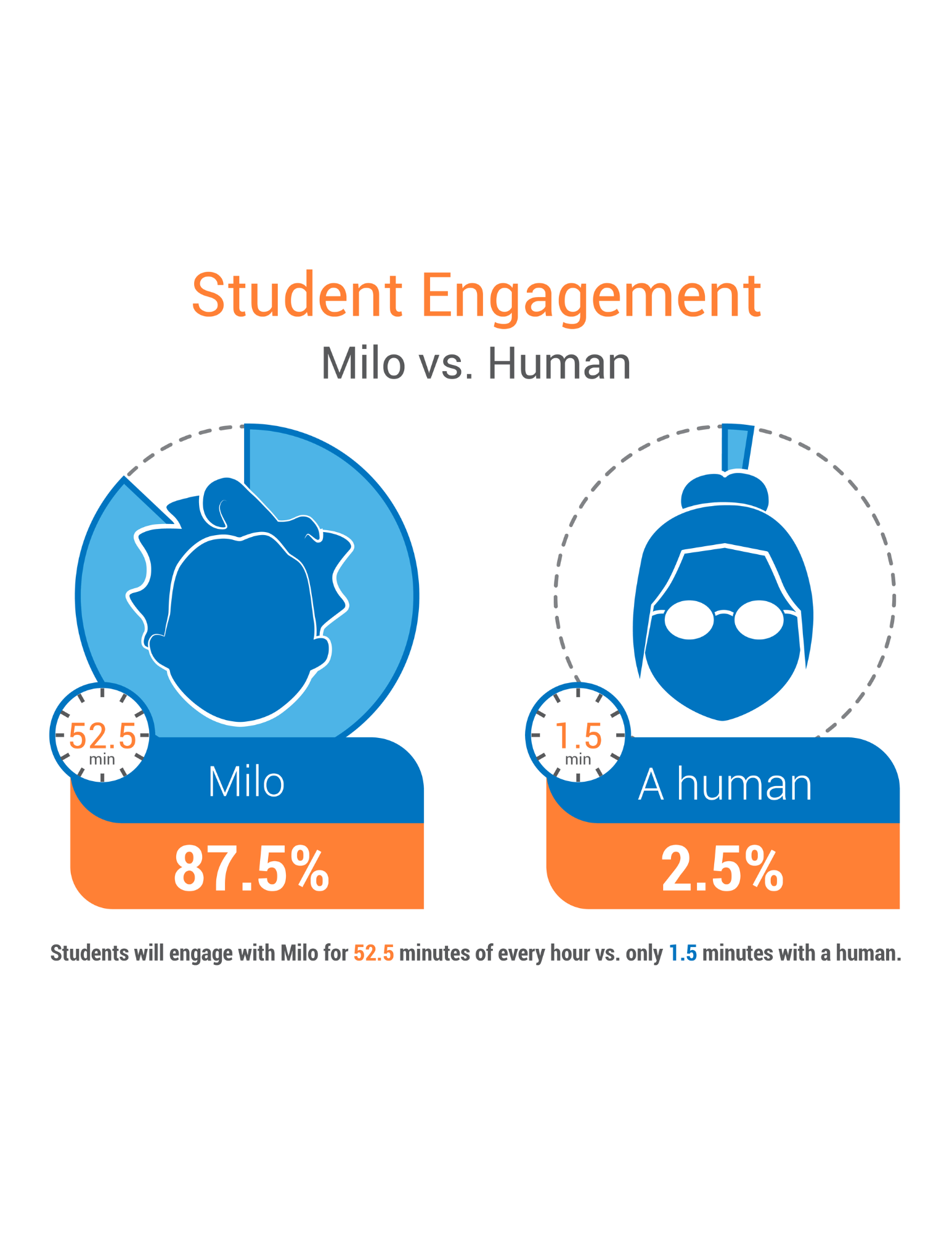
Increase Student Engagement for Autistic Students
According to a study done by University of Texas at Dallas Callier Center, students on the spectrum engage with the robot more than a human therapist alone. The same study found minimally verbal students engaged with the robot 67.81% of the time versus just 2.37% of the time with a therapist alone.
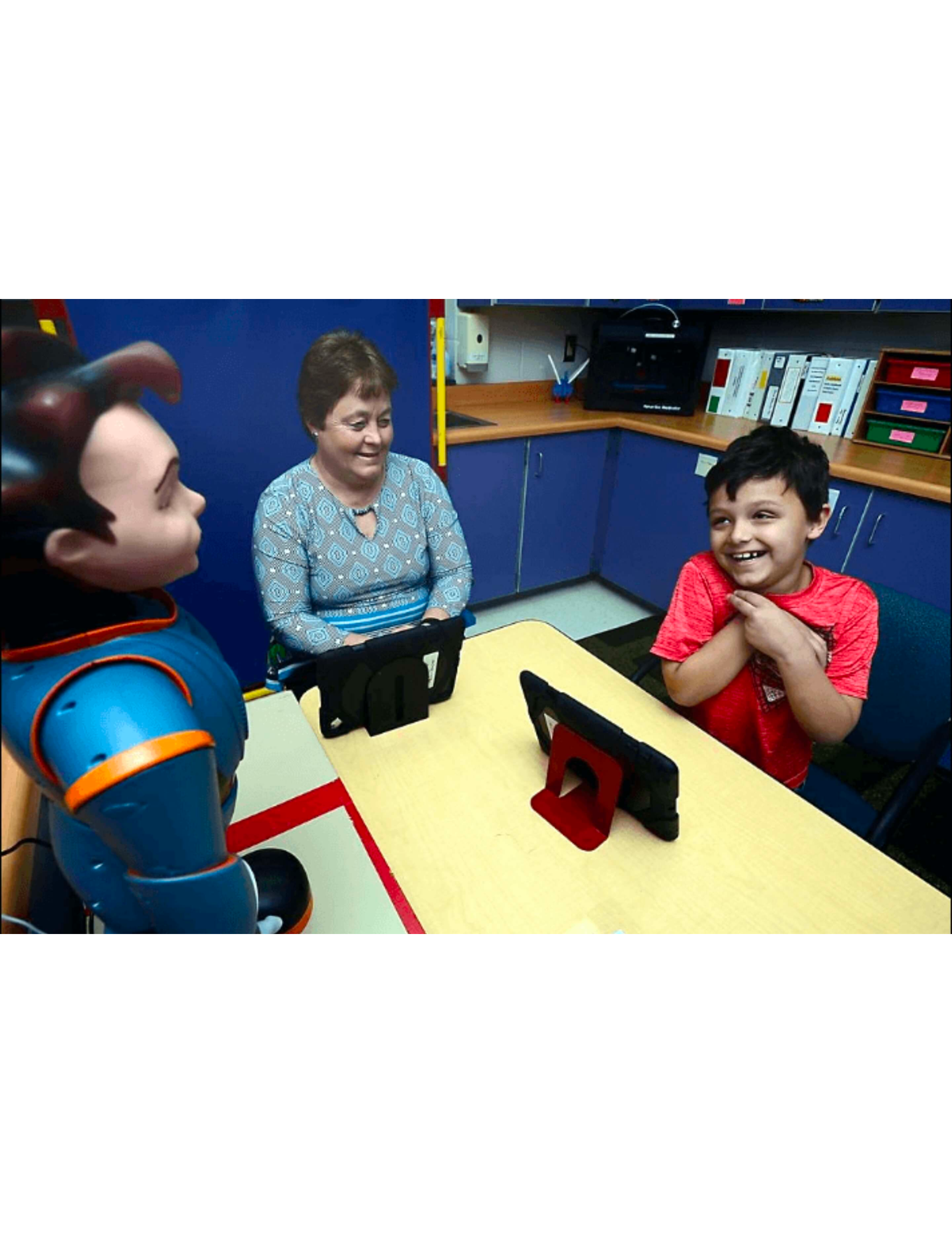
Progressing to Inclusive Full-Day Schooling
Research done at McCarthy-Teszler School included 17 students with behavioral intervention plans and social-focused IEP goals. One year of using the RoboKind program, all participating students showed significant progress and mastery of social skills and academic goals. Plus, each student progressed to attending full-day classes.
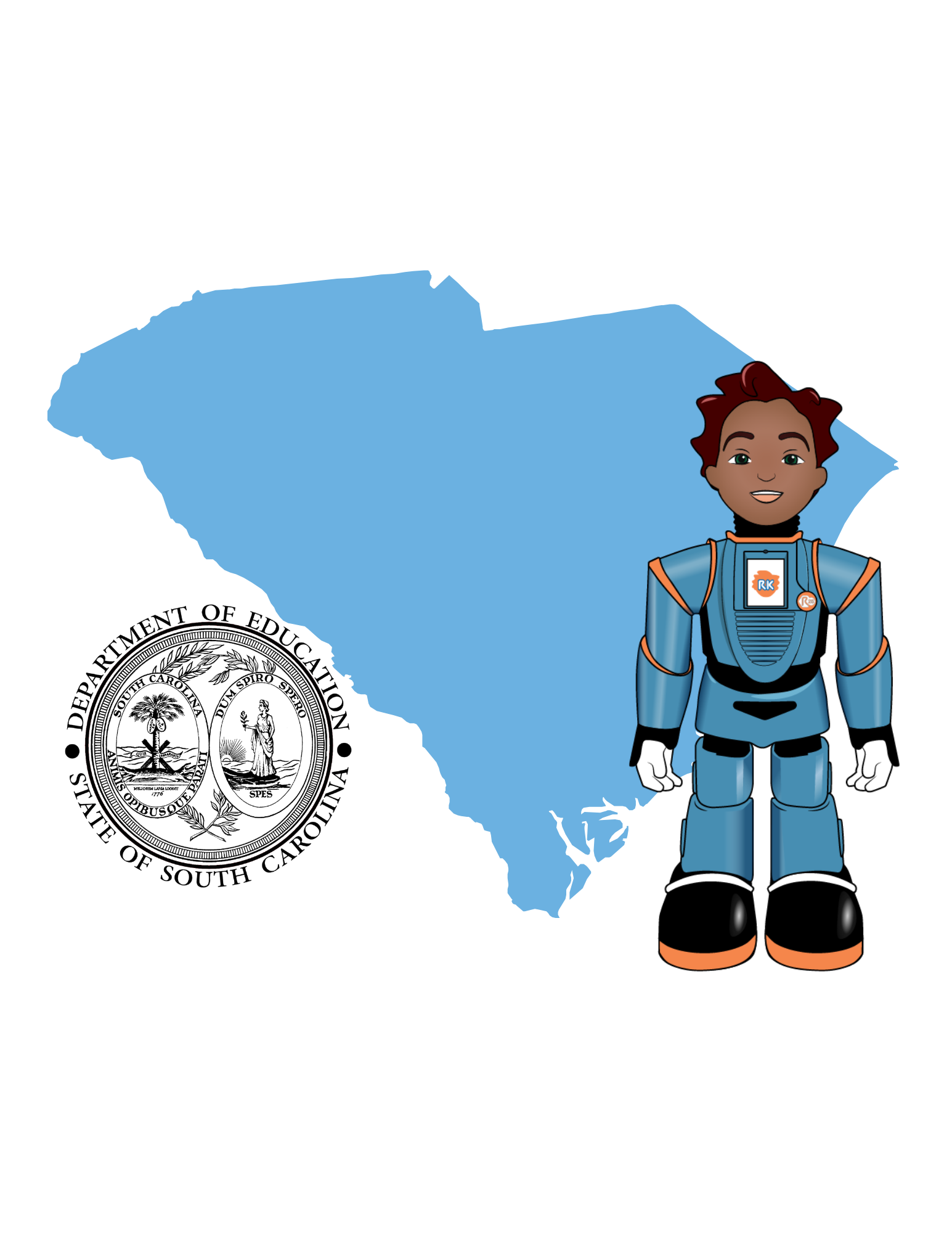
Students Generalize Social Skills
In 2018, the South Carolina Department of Education launched a 3-year study with RoboKind. 90% of participating students demonstrated mastery of at least one concept, resulting in observable generalizing and transference of the skills they learned to human-to-human interactions.
Applying for a Grant?
A majority of our partners use grants to fund out program.
To ease the application process, here are helpful documents you will need in one downloadable folder.
.png)
Supporting your Implementation
To achieve positive outcomes with your students, RoboKind has a proven onboarding process tailored to the unique environment of each school and classroom.
Professional learning and instructional coaching for your teachers and staff ensure new users have the confidence to implement with fidelity. Working side-by-side with a humanoid robot or avatar is an opportunity for your teachers to expand their skills.
The professional learning sessions use your implementation and other unique data to:
-
Personalize instruction
-
Develop processes for behavioral and functional-behavioral assessment
-
Create measurable, observable goals
-
Review student’s Present Levels of Academic Achievement and Functional Performance (PLAAFP)
-
and more!
The Only CASE-Endorsed Social Skills and Phonics Robotics Program
As of 2020, RoboKind received an endorsement by CASE, the Council of Administrators of Special Education. This endorsement involved an intense, multi-year review by a panel of special education administrators from across the United States.
The rigorous evaluation process of RoboKind’s program included review of:
- The Social Skills and Phonics curricula
- Professional learning
- Underlying research and case studies supporting the efficacy of the program
- Research within the area of technology and autism
- Interviews with RoboKind customers
CASE endorses very few programs, and RoboKind is the first social, emotional, and behavioral product to meet its stringent standards and requirements for endorsement.
Do you Require CASE-Endorsement?
Some schools only use programs endorsed by CASE. Lucky for you, RoboKind checks the box.
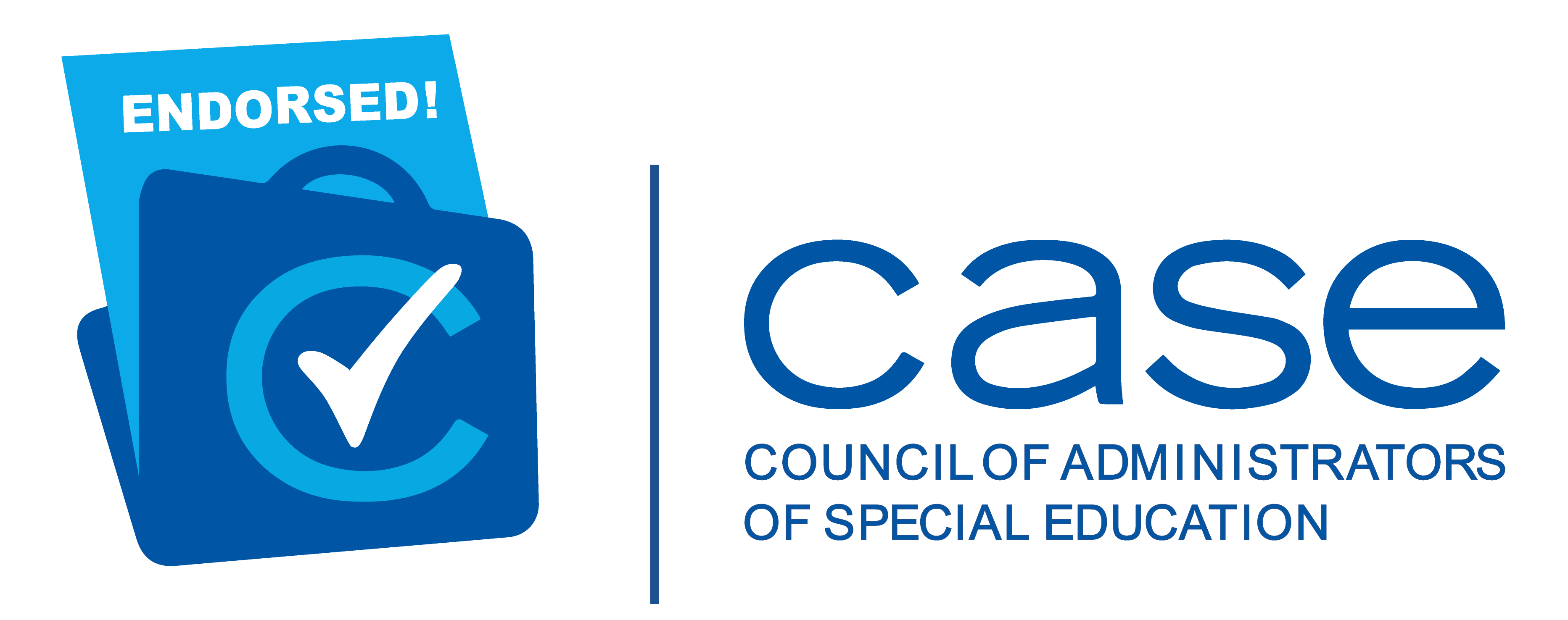
Federal and State Grants to Help your School
Federal funding for K-12 special education is governed by ESSA and IDEA
The Every Student Succeeds Act (ESSA) has expanded and improved provisions focused on equity and critical protections for America's disadvantaged and high-need students. ESSA places significant focus on supporting and growing local, evidence-based, and place-based innovations.
Individuals with Disabilities Education Act (IDEA) has remained the main source and bulk of federal special education funding. As an in-classroom, evidence-based intervention, RoboKind's Social Skills and Phonics programs are uniquely qualified for ESSA and IDEA funding.
Let’s first take a look at a few different types of grants.
Formula Grants
Formula grants are widely non-competitive. These grants are allocated across the group of eligible recipients. All applicants who meet the minimum requirements of the application process are entitled to receive funding based on a preset calculation.
In most cases, formula grants are distributed by the federal government to state agencies based on enrollment data.
Competitive Grants
Competitive or discretionary grants are awarded based on a competitive process. This typically includes a proposal evaluation. Funding is determined based on the merits of the application and is not pre-determined.
For this type of grant, it is crucial to fully understand the criteria to ensure your application is as competitive as possible.
Medicaid Billings
Medicaid can be a powerful tool for school districts to accelerate positive outcomes for special needs students. Medicaid can cover expenses related to transportation, counseling, and assistive technology.
School-based Medicaid billing is a complicated process varying by state. We recommend working closely with your billing team to understand your district's requirements.
Formula and Competitive Grant Listing
We did the heavy-lifting for you. Here are all the grants you can use to get RoboKind for your students.
For information on school-based Medicaid, scroll down or contact us.
ESSER I/II & ARP
*Limited Time Only*
To support the needs of schools and students during the COVID pandemic, Congress added approximately $180 billion in additional education funding. The most recent $128 billion is distributed through the Title 1 formula.
IDEA, Part B
IDEA, Part B provides more than $12 billion in federal funding every year to State Education Agencies, which in turn distribute funds according to special needs student enrollment.
Title II, Part A
Most districts use Title II funding to improve the efficacy of their educators by investing in Professional Learning that is job-embedded, specific, and relevant to student needs.
Title I, Part A
This grant is focused on improving the academic achievement of the disadvantaged. Funds are allocated for evidence-based purchases to improve academic performance.
1003A
In order to use 1003A school improvement funds, partners and programs must be evidence-based.
Section 7003
Ideal for districts with federally connected students, including Indian lands and uniformed services.
21st-Century Community Centers
Specifically meant for rural and inner-city schools or co-ops. These grants enable the implementation of social services needed to support the community.
Title V, Part A
Designed to improve academic achievement and quality of education for all students, specifically through the use of innovative programs.
Title IV, Part A
Student support and academic enrichment (SSAE) grants support "effective use of technology" and professional learning for teachers.
IDEA, Part D
A little-known section of IDEA funds "national activities" aimed at improving the education of children with disabilities.
Overwhelmed yet? Funding is hard.
Why is funding new programs for your students so confusing? Don't worry, we know how to get creative with funding sources. We've done it before.
RoboKind Funding Eligibility
A majority of school districts leverage a combination of IDEA, formula, and competitive grants distributed via the Office of Special Education Programs. There are always opportunities to fund a RoboKind program through federal, state, or local grants.
Here is a snapshot of line-item funding with grants.
| Program Line Item | Detailed Description | Funding Eligibility |
|---|---|---|
|
Facially-Expressive Robot and Avatar
|
Sole source developer and manufacturer of the R25 robot, designed for in-classroom use and research-proven to improve student engagement during lessons.
|
ESSER I/II & ARP
IDEA, Part B, D Title I, V 1003a & Section 7003 21st-Century Centers Medicaid |
|
CASE-Endorsed Social Skills and Phonics Curriculum
|
Sole source designer and author of the curriculum. Includes 200+ robot and avatar-led lessons, 260+ generalization activities, facilitator guides, and parent resources.
|
ESSER I/II & ARP
IDEA, Part B, D Title I, IV, V 1003a & Section 7003 21st-Century Centers Medicaid |
|
Professional Learning
|
Sole source designer, author, and trainer of professional learning sessions focused on improving educators' knowledge and skills for delivering high-fidelity programs curriculum.
|
ARP (ESSER III)
IDEA, Part B, D Title I, IV, & V 1003a & Section 7003 Medicaid |
Applying for a Grant?
A majority of our partners use grants to fund out program.
To ease the application process, here are helpful documents you will need in one downloadable folder.
.png)
Competitive Comparison Rubric
The only Social Skills and Phonics program with facially-expressive robots and avatars.
It is hard to directly compare RoboKind to other programs. No other educational programs combine the power of facially-expressive humanoid robots with an evidence-based social-emotional learning curriculum.
Not to mention, we're the only robotics and avatar program endorsed by the Council of Administrators of Special Education (CASE).
Let’s explore the landscape and some of the available alternatives. Some of these programs use robots, and some of them have social skills and phonics curriculum. Here's how we match up to other solutions created to meet students' dynamic needs.
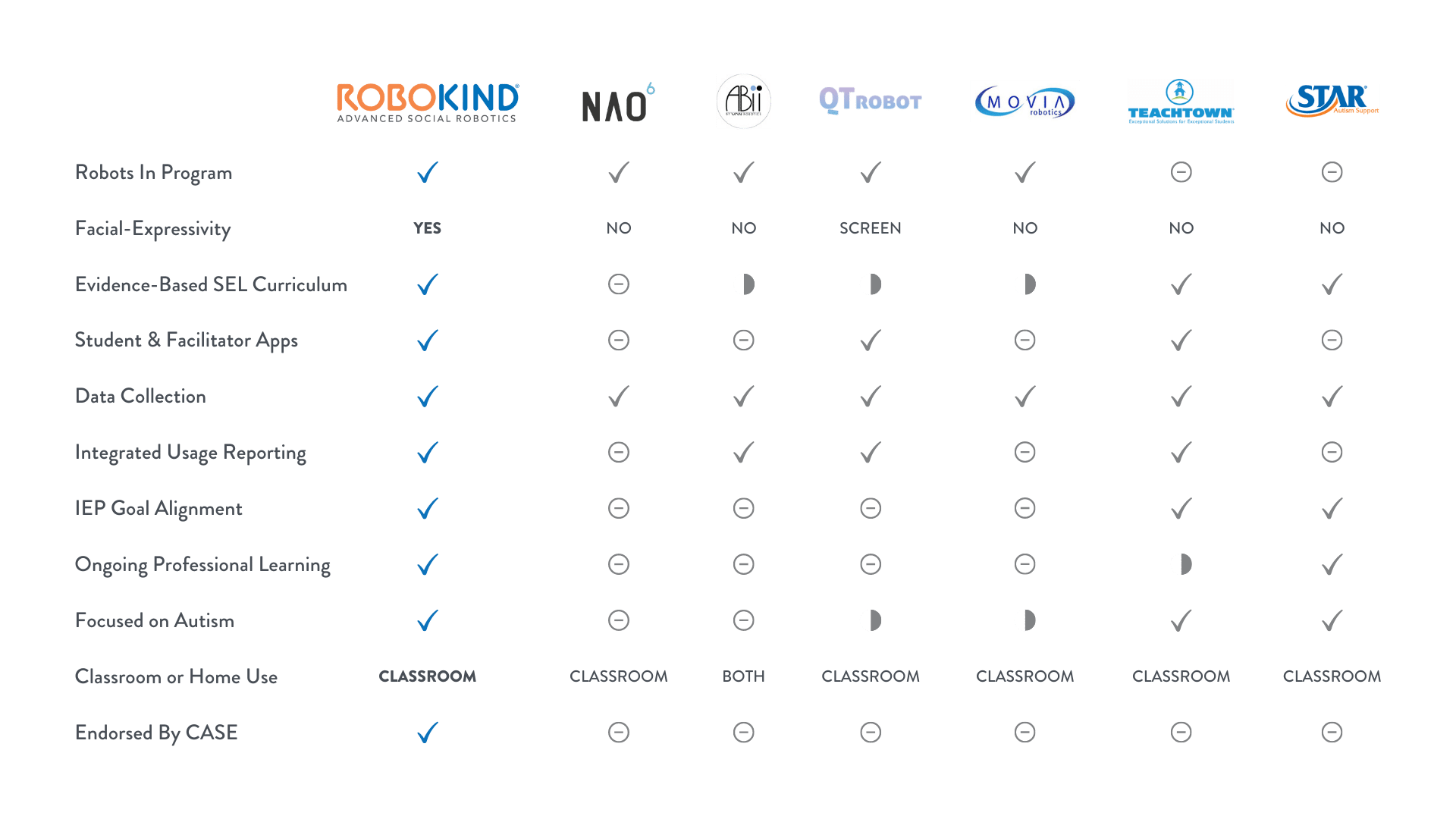
Comparison Criteria
Here are the criteria used to compare RoboKind to fellow robots and education providers.
Robots in Program
Does the program utilize robots? Our research shows interactive technology better engages autistic and neurodiverse students.
Facial-Expressivity
If the program uses robots, is the robot facially expressive (e.g. uses motors, humanoid design, and mechanical)? If not, does it display facial expressions via a screen?
Evidence-Based Curriculum
Is the program research-based and evidence-based? Are there case studies and testimonials proving student mastery of social, emotional, and behavioral skills?
Student & Facilitator Apps
Does the program include applications for the student and facilitator?
Data Collection
Does the program collect student data and progress? Can you use program data to futher personalize student instruction?
Integrated Usage Reporting
If the program collects data, does the software provide reports and analysis for facilitators to monitor student progress and mastery?
IEP Goal Alignment
Does the program provide IEP Goal Alignment? Are lessons directly matched to social, emotional, and behavioral learning goals for your special needs student?
Ongoing Professional Learning
Does the program offer professional learning and facilitator training to ensure high-fidelity implementation, ongoing usage, and high return on district investment?
Focused on Autism
Is the program or robot intentionally designed for autistic students and those with similar intellectual disabilities? Does it include any evidence-based practices for teaching autism?
Classroom or Home Use
Is the program designed to be used in a classroom or at home?
Endorsed by CASE
Has the program achieved the rigorous endorsement from the Council of Administrators of Special Education?
Using School-based Medicaid to Fund Assitive Technology
RoboKind is considered "Durable Medical Equipment" qualifying for school-based billings
Covering everything from transportation and school clinics to assistive technology and counseling, Medicaid has evolved into a powerful tool for school districts to fund programs to accelerate positive outcomes for their special needs students. A school’s ability to leverage Medicaid funding ensures it can provide the wide range of services needed to educate students with disabilities and ensure their compliance with IDEA requirements.
Schools must provide medical services necessary for students to get an education as part of their special education plans. Medicaid pays for these services for eligible children. School-based Medicaid billing is a complicated process varying by state. We recommend working closely with your billing team to understand your district's requirements.
Below is a guide to help administrators understand the process for using Medicaid billings to fund RoboKind for their eligible students.
Step 1: The Checklist(s)
The first step to securing funding for your student is to ensure the funding source is a good fit. If you are planning to use Medicaid to fund RoboKind, utilize our checklist below to ensure the program is a good fit for your student before continuing on:
-
Does your student have social-emotional focused IEP goals?
-
Is your student interested in robots or technology?
-
Does your student qualify for or is already enrolled in Medicaid?
-
Is your school or agency authorized as a qualified Medicaid provider?
If you answered no to any of the above, applying for Medicaid funds may not be the best fit for your student.
In order to cover the costs associated with student services, districts must ensure the following:
-
The child receiving the service or durable medical equipment (DME) must be qualified for or enrolled in Medicaid.
-
The services or equipment are medically necessary.
-
The services or medical device must be covered in the state Medicaid plan or authorized by the federal Medicaid statute.
-
The services or equipment must be listed in the child's individualized education program (IEP).
-
The school or agency must be authorized by the state as a qualified Medicaid provider.
Does your district and student meet (or can meet) the above requirements? If so, proceed to Step 2.
If you don’t, no worries. There are plenty of options to fund RoboKind for your students.
Step 2: Determine Student Fit and Program Pricing
Did you find yourself nodding along to the questions in Step 1? If you feel Medicaid is a good fit to fund your RoboKind program, let's talk! Our team is ready to learn more about your student. After discussing the student-specific implementation, we will build your district a custom quote to meet the documentation needs of your billing process.
Step 3: Understand the billing code for your state
In most states, RoboKind falls under Medicaid code e1399 (Uncategorized Durable Medical Equipment). This code is a reimbursement code providing 80% of the invoiced amount back to the school. The remaining 20% is to account for the 2-year administrative review process.
In short, 100% of the RoboKind invoice can be reimbursed under Medicaid billing.
.png?width=1200&name=Funding%20Guide%20%20Understanding%20Billing%20Codes%20(1).png)
Step 4: Include RoboKind in the student’s IEP
Required services must be listed in the student IEPs. Many of our partners use language such as “socially-assistive robots” and “socially-assistive technology” for IEPs related to social-emotional learning skills.
IEP goals focused on improving social skills align directly with RoboKind's curriculum. Mastery is measured using the RoboKind data collection software.
Step 5: Purchase, Submit Reimbursement
Once you submit your purchase order to RoboKind, we will send the invoice for your order and get your robot shipped. We will work directly with your district billing agent to ensure you have the proper documentation to accelerate the reimbursement timeline. Reimbursement can happen as fast as 10 business days!
Step 6: Accelerate IEP Goal Mastery
As a new partner, you'll join the elite group of schools using RoboKind with special needs students. This process includes onboarding for your robot facilitators to start making an immediate impact with your student.
Her life changed when she met Milo.
Writing S.M.A.R.T. IEP Goals
When using federal, state, and local grant dollars, it is paramount to know what you and your students are trying to achieve. S.M.A.R.T. goals can help.
S.M.A.R.T. goals are simply a restatement of the results that you are working to achieve. In nature, they are designed to provide a clear and mutual understanding of the expected outcome.
Writing S.M.A.R.T IEP goals are critical when looking to attain funding for your program. Grant applications tend to focus on returns, so it’s imperative that your goals reflect the outcomes you are aspiring towards. Learn more about aligning your student’s IEP goals to RoboKind’s curriculum.
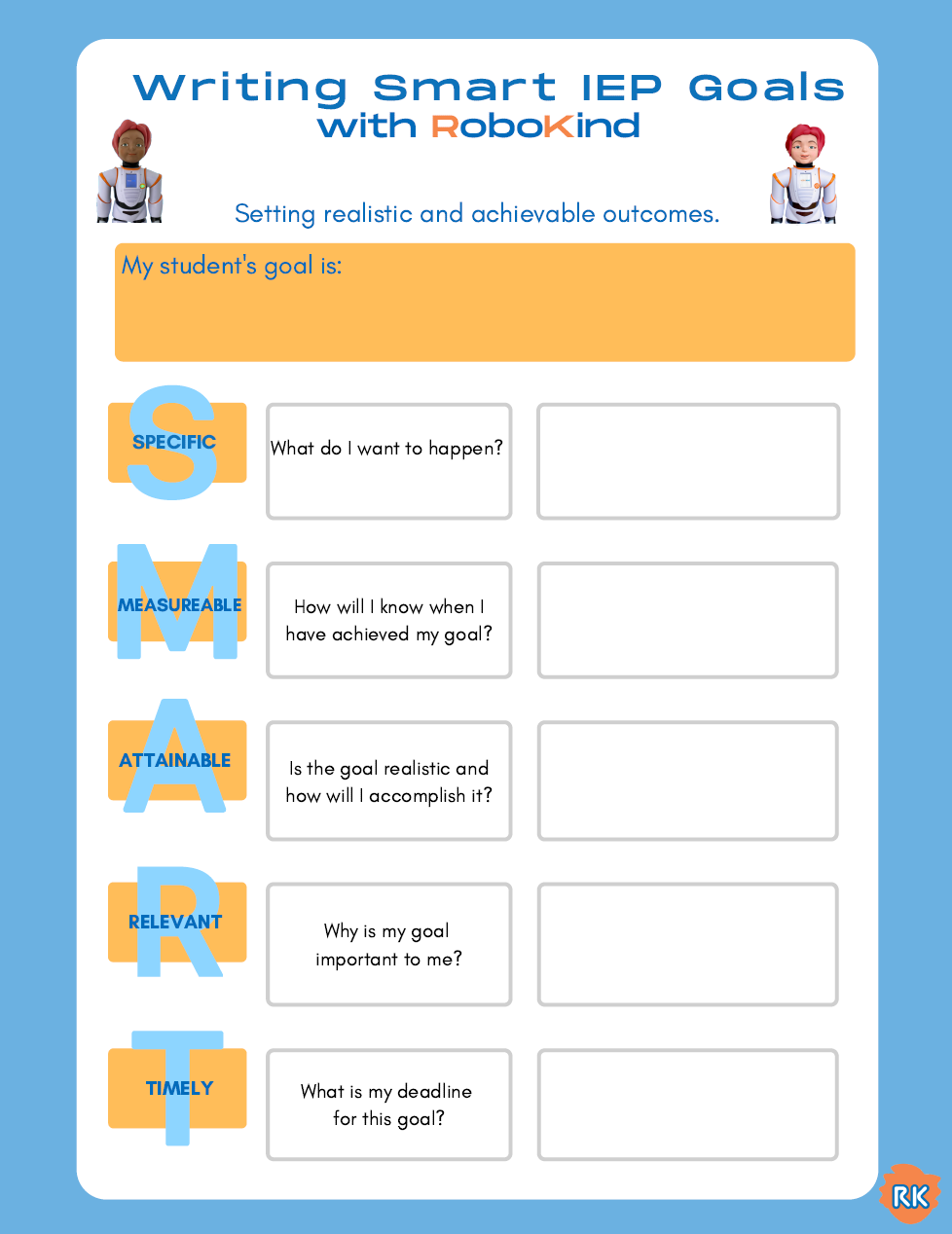
S.M.A.R.T. IEP Worksheet
Not sure how to build a S.M.A.R.T. goal? No problem! We created a simple-to-follow worksheet that makes writing fundable IEP goals a breeze! Simply click below to download.
IEP Goals Matrix
Annual IEP goals are like a road map of learning for your students. IEPs answer essential questions like where are we heading this year?; what will we be working on?; what can we achieve by the end of the year, both academically and functionally? Well-written goals should be both positive and descriptive regarding a measurable skill. Check out some tips for writing S.M.A.R.T. IEP Goals.
We’ve taken out a bit of the guesswork and put together some sample social skills goals. We connected each sample goal with a matching RoboKind module.
The following examples are provided as suggestions, however, each student is unique, and as always, lessons and activities should be tailored to each student’s unique needs. We hope this matrix is a helpful starting point as you get your student’s IEP goals ready for funding applications. RoboKind aims to support every district, but we recognize that we may not be the best partner for every situation. Use your student's IEP goals to determine the best resources for their needs.
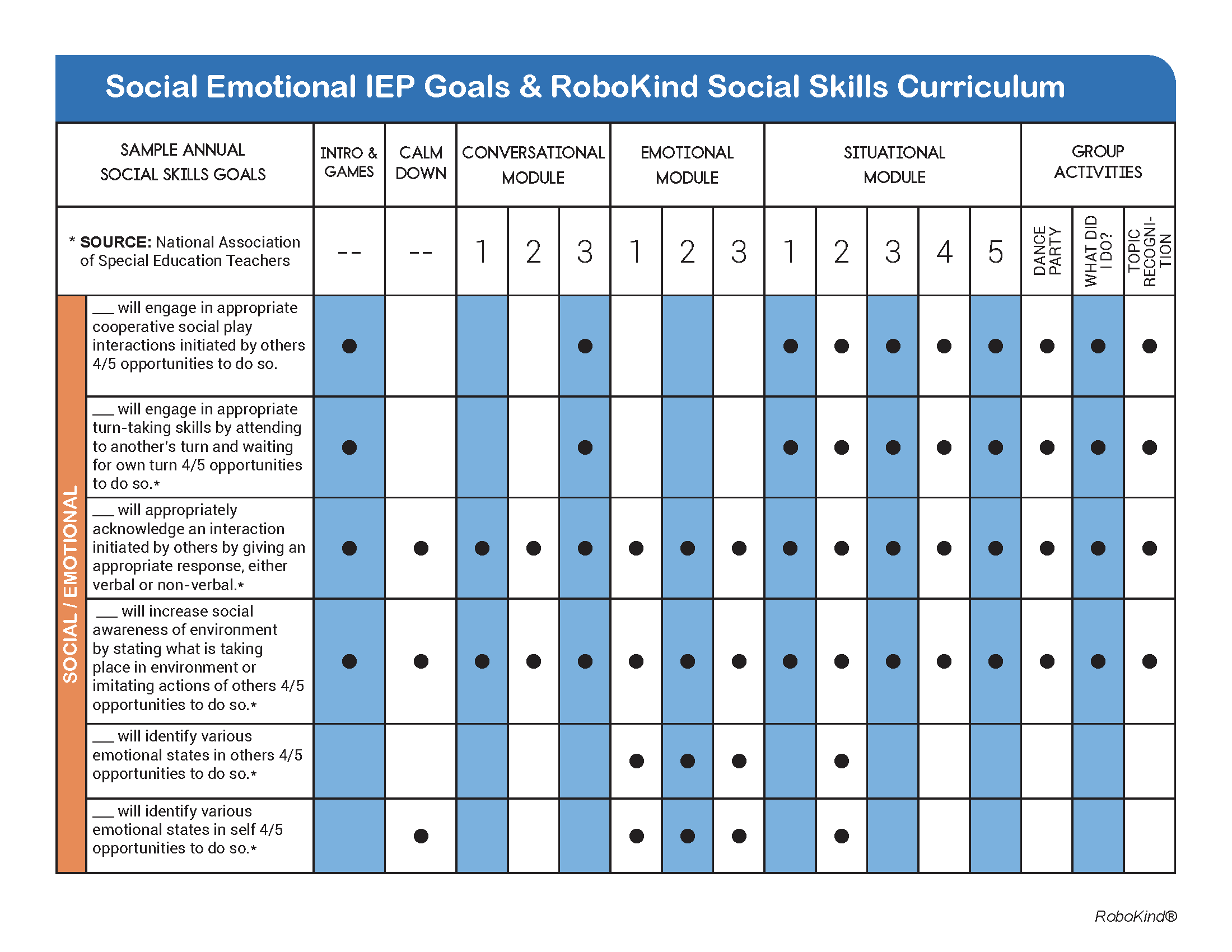
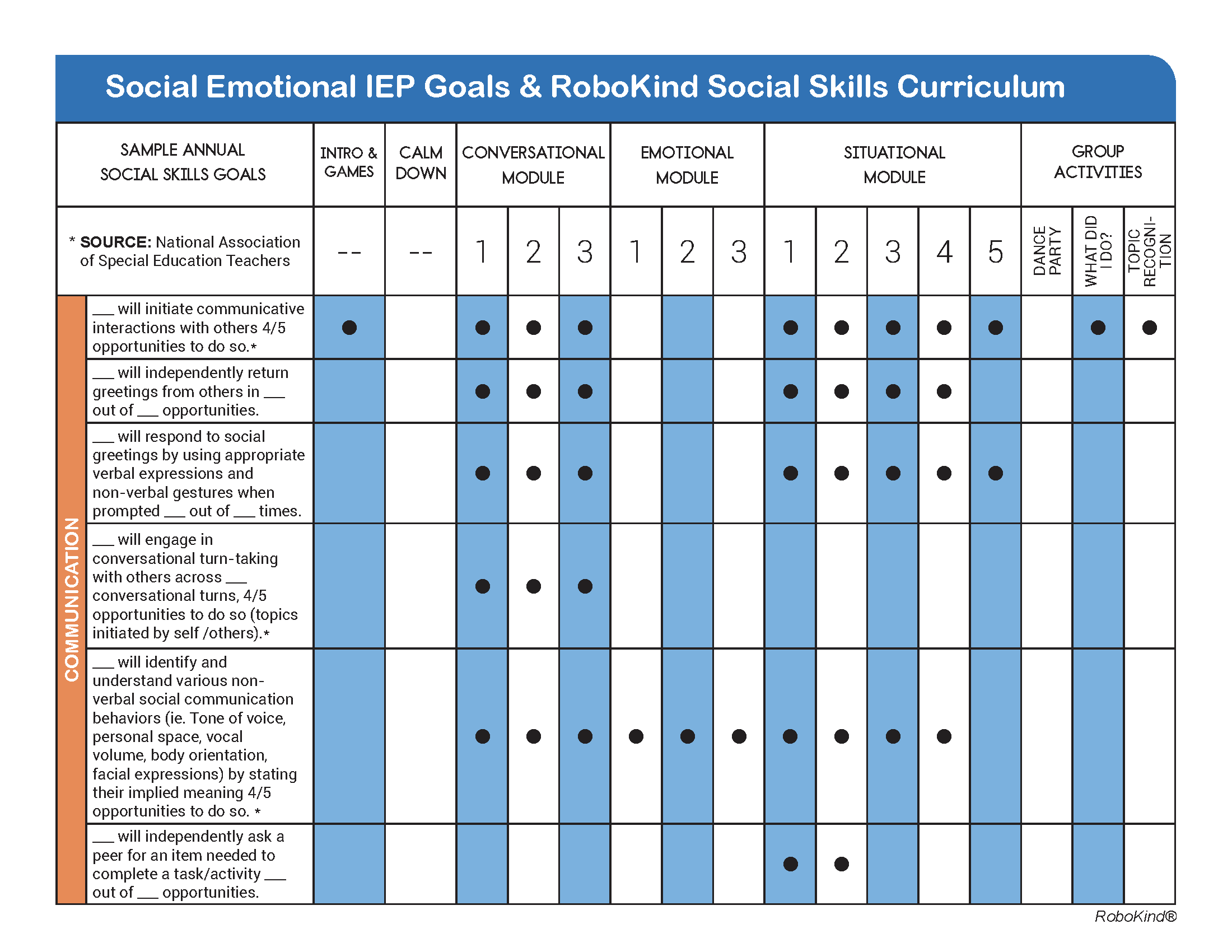
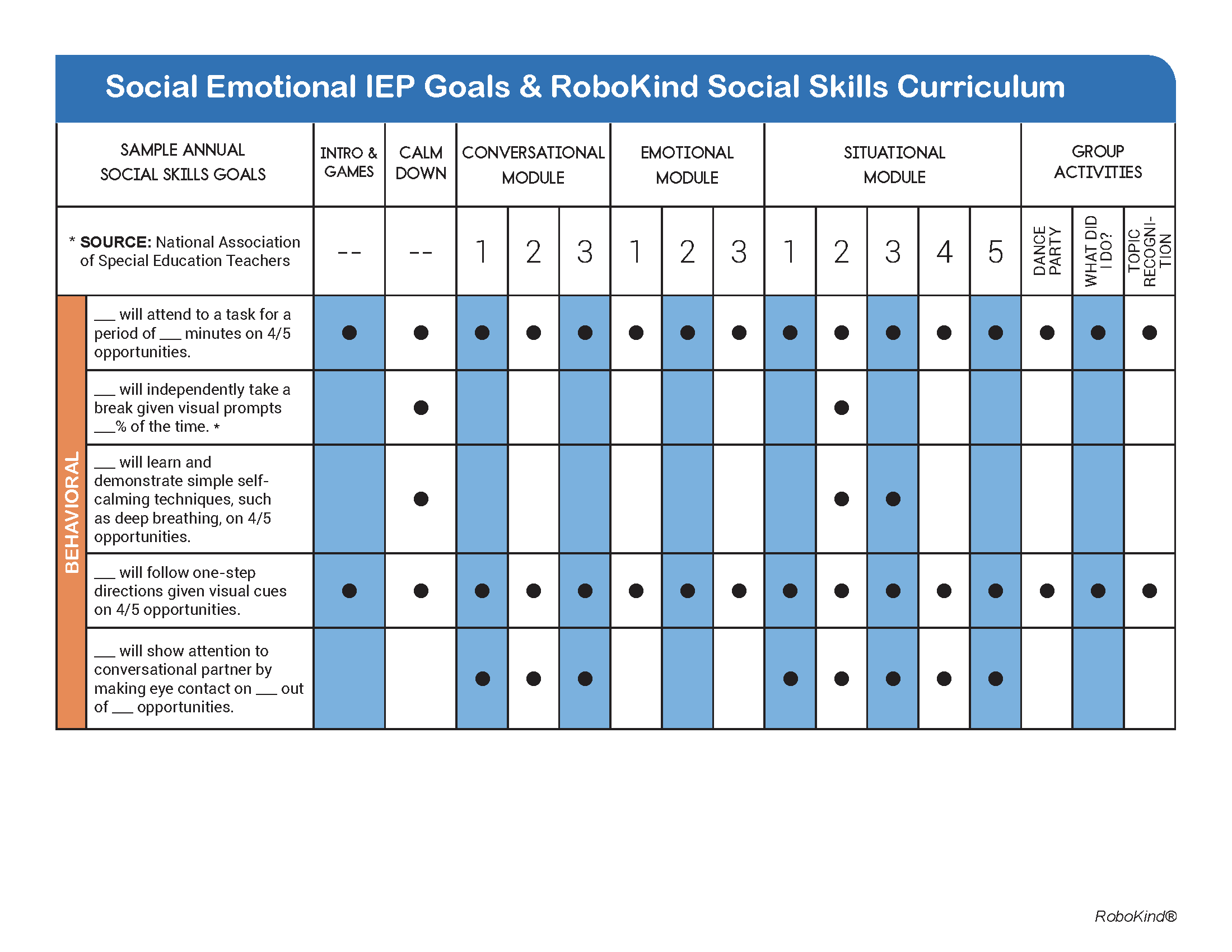



Funding Documentation
When you’re ready to move forward with a grant application for RoboKind’s program, you’re going to need some documentation. We’ve made it simple. Simple use these links below to download the documentation you need!
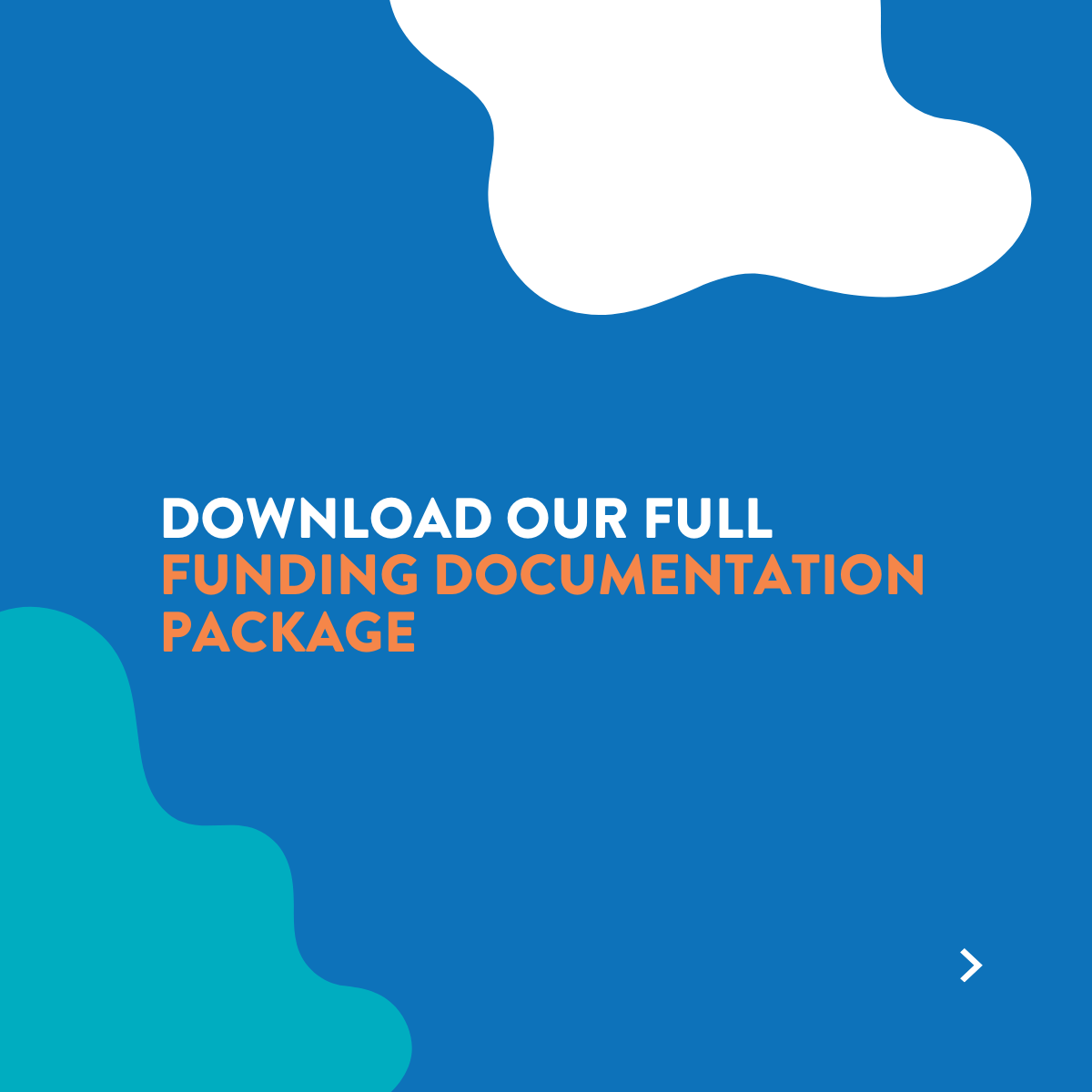
The Full Package
If you need the entire documentation package, use this link to download the .zip file. In it, you will find the sample application, our Sole Source Letter, our W9 and other vendor information, our company agreements, and privacy policies.
Frequently Asked Questions
How can my district get special education funding?
There are a number of funding sources available, at both the federal and state level. Simply, scroll up to see a robust list of available grants!
How can I be creative with my funding options? Can I use different funding sources for different aspects of a program?
Absolutely. Not only can you use multiple sources like IDEA for the robot itself alongside Title 1 funds for Professional Learning. Schedule a conversation with our New Partnership Team to come up with creative ways to secure funding that work for you and your classroom(s).
How much does RoboKind cost?
Complete pricing for a program depends on a number of factors including the number of robot programs, the number of years the program will be implemented, and your Professional Learning preferences. Build your custom quote here.
Why is there a yearly renewal for the RoboKind curriculum? What does the renewal cover?
RoboKind offers a simple annual renewal process to ensure easy access for all of our partners. Renewals include one year of the RoboKind Social Skills or Phonics Curriculum Software (per robot), including new lessons, generalization activities, engagement features, and app enhancements. The curriculum software is renewed on an annual basis and offers Technical Support throughout the school year and Partnership Success data check-ins. Schools can absolutely renew for multiple years at a time, contact your Partnership Success Manager for renewal assistance.
Can I purchase the RoboKind program for multiple years at a time?
Yes! In fact, you can lock in current renewal prices for the curriculum by purchasing for multiple years at a time. Some districts are getting creative with grants and using funds available now to support multiple years which gives them time to figure out how to support a renewal down the road.
Is RoboKind considered “assistive technology”?
Yes! Classifying the program as Assistive Technology is popular when applying to use funding like Medicaid. In fact, RoboKind has won several awards for Assistive Technology like EdTech Digest’s Cool Tool Award for Special Needs and Assistive Technology Solution and The Tech Edvocate Award for Best Assistive Technology App.
How does the RoboKind curriculum align with sensory challenges?
The Robokind Curriculum supports the remediation of characteristic challenges faced by students with autism, including sensory challenges. The curriculum specifically has an entire module dedicated to managing frustrations that manifest through communication and sensory deficits. Students learn to use sensory tools to calm down and be better able to participate in their learning. Furthermore, the curriculum integrates sensory components through social-emotional lessons that involve the ability to communicate one's feelings, needs, and wants - a large component of managing sensory integration.
What are the data security measures in place to protect student data?
RoboKind is fully HIPPA and FERPA compliant. View a copy of our Privacy Policy here, or download a copy with our Funding Guide packet.
Need funding support?
Our team is ready to help! We have supported many districts and helped them achieve over $2M in supplemental grant awards. Schedule a call to learn how we can help.
.png)
